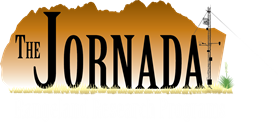| Title | Reflectance of vegetation and soil in Chihuahuan desert plant communities from ground radiometry using SPOT wavebands |
| Publication Type | Journal Article |
| Year of Publication | 1993 |
| Authors | Franklin J, Duncan J., Turner DL |
| Journal | Remote Sensing of Environment |
| Volume | 46 |
| Pagination | 291-304 |
| Date Published | 1993 |
| Accession Number | JRN00171 |
| Call Number | 00612 |
| Keywords | article, articles, Bouteloua, remote sensing, Flourensia, remote sensing, journal, journals, Larrea, remote sensing, model, landscape, Li-strahler, model, Li-strahler, Prosopis, remote sensing, radiometry, remote sensing, Bouteloua, remote sensing, Flourensia, remote sensing, Larrea, remote sensing, Prosopis, remote sensing, soil reflectance, remote sensing, soils, remote sensing, vegetation reflectance, soil, remote sensing |
| Abstract | The spatially averaged reflectance of a partially vegetated land surface can be modeled as an area-weighted mixture of the reflectances of different components or classes of objects (plants, shadow) of the background (soil, grass). We sampled the spectral reflectance of the shaded and unshaded components of Chihuahuan desert plant communities (shrubs, soil, subshrubs, and perennial grasses) in the SPOT wavebands using a hand-held radiometer. WE examined the mean reflectance differences between components to evaluate their spectral separability. Shrub canopy and shaded components have similar reflectance in the visible wavebands. However, in the near-infrared band, which is strongly scattered by green plant canopies, the shaded canopy and shaded background components were similar to each other and lower than either sunlit background or sunlit canopy. When reflectance measurements were transformed to normalized ratio (NDVI, SAVI) and orthogonal green vegetation indices, the shaded and sunlit portions of each component (canopy and soil) were similar, but the shaded components were intermediate between their sunlit counterparts. Different soil types and plant species with different life forms (e.g., shrubs, grasses) and phenologies exhibited different reflectance characteristics. However, the broadband reflectances of the three dominant shrub species were similar at the end of the growing season, in spite of their differences in morphology. |
| URL | files/bibliography/JRN00171.pdf |
| DOI | 10.1016/0034-4257(93)90049-4 |


